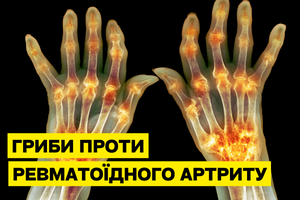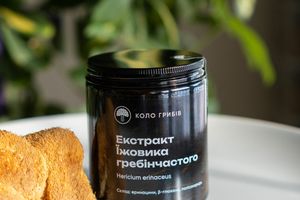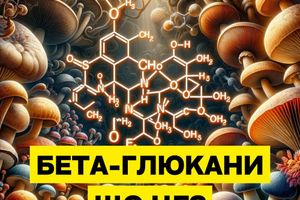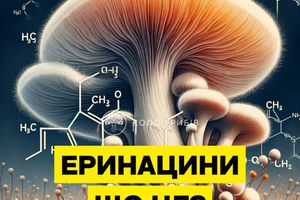Lion's Mane in the treatment of damage to the sciatic nerve
A study conducted by a group of scientists from Malaysia in 2014 demonstrated that the extract of Lion's mane mushroom (Hericium erinaceus) stimulates the regeneration of the sciatic nerve in rats following its injury.
The study included daily oral administration of the extract, analysis of signaling pathways activation and gene expression in the spinal cord, and evaluation of protein synthesis in the nerve. The results revealed increased immunoreactivity and protein synthesis activity, indicating the beneficial effect of the Lion's mane mushroom on nerve regeneration. This research suggests the potential of Lion's mane in treating peripheral nerve injuries.
In the study, mice were administered a water extract of Lion's mane mushroom at a concentration of 100 mg/kg body weight daily. This dosage was chosen based on previous experimental studies and literature data indicating its effectiveness and safety for oral use in experimental models.
Complex methods were used to analyze the activation of signaling pathways and gene expression in the spinal cord and to assess protein synthesis in the nerve. Specifically, immunofluorescent staining was used to determine protein expression (a process in which proteins are synthesized in living organisms based on instructions encoded in genes), Western blot for protein markers analysis, and reverse transcription polymerase chain reaction (RT-PCR) to measure mRNA levels. These methods allowed for a detailed investigation of the biological processes occurring at the molecular level as a result of the mushroom extract's impact on nerve regeneration.
Positive changes in mice receiving the water extract of Lion's mane mushroom were noticed 7 days after injury. These changes included the activation of important signaling processes and increased control over key molecules such as Akt, MAPK, c-Jun, and c-Fos, in nerve cells on the same side of the body where the injury occurred, as well as in proteins located in the cell nucleus and involved in gene regulation in damaged nerves.
It was also noted that functional recovery of the injured limb began 7 days after injury, with full recovery of function observed within 10–14 days, which was 4–7 days earlier than in the control group.
Akt (also known as Protein Kinase B, PKB) is a serine/threonine kinase that plays a key role in regulating cell survival, growth, and metabolism. Activation of Akt can protect cells from apoptosis (programmed cell death).
MAPK (Mitogen-Activated Protein Kinases) is a family of proteins that act as molecular switches, turned on or off by the addition of a phosphate group. They play a key role in transmitting signals from cellular receptors to DNA in response to external stimuli such as cytokines (proteins that regulate the immune response), mitogens (substances that stimulate cell division), and stress signals. These "switches" are critically important for regulating vital cellular processes, including cell growth, development, differentiation (the process by which cells become specialized), and programmed death (apoptosis), helping to maintain health and balance in the body.
c-Jun is part of AP-1 (Activator Protein-1), a special protein that helps turn on or off the operation of certain genes in the cell, thus affecting processes such as cell growth, their specialization (differentiation), and programmed death (apoptosis). Apoptosis is a controlled cell dying process that helps the body get rid of old, damaged, or unnecessary cells. Gene expression refers to the process by which information from genes is transformed into products, such as proteins, that perform specific functions in the cell. c-Jun can be activated through a process known as phosphorylation — the addition of a phosphate group to a molecule, altering its activity, carried out by another family of proteins called MAPK. Phosphorylation is a key mechanism for regulating the activity of many proteins within the cell.
c-Fos is another part of AP-1, like c-Jun, and helps control when and how certain genes are activated, affecting the cell's ability to divide, specialize, or survive. The work of c-Fos can be initiated or activated in response to various stimuli, such as when a cell grows, experiences stress, or when nerve cells are activated. This means that c-Fos begins to actively work in response to changes in the external or internal environment of the cell, helping it adapt to new conditions.
The conclusion of this study underscores the significant potential of Lion's mane extract in stimulating the regeneration of the sciatic nerve in mice after injury. The positive changes observed a week after the beginning of treatment, including the activation of key signaling molecules and increased nerve regeneration, open new perspectives for the treatment of similar injuries in humans. Scientists often use mouse models because the organisms of these animals and humans have a lot in common, which allows for a high probability of extrapolating research results to humans. Thus, the use of Lion's mane extract could play an important role in developing new methods for treating nerve damage in humans, promoting faster and more efficient regeneration.
This material is based on a scientific study from 2014 DOI: 10.1007/s11655-014-1624-2 by a group of scientists from Malaysia
For each client individually, we draw up instructions according to his indicators and requests
Monthly Course:
- Lion's Mane Mushroom (whole/powder) 100 g - $27
- Lion's Mane Mushroom Extract 90 capsules - $46
- Lion's Mane Mushroom Extract for 3 months 270 capsules - $119
Other articles on the topic:
- Properties of Lion's Mane Mushroom
- Lion's Mane against diabetes
- The effect of the Hericium erinaceus (lion's mane) on pain and inflammation in patients with rheumatoid arthritis
Contact us:














































